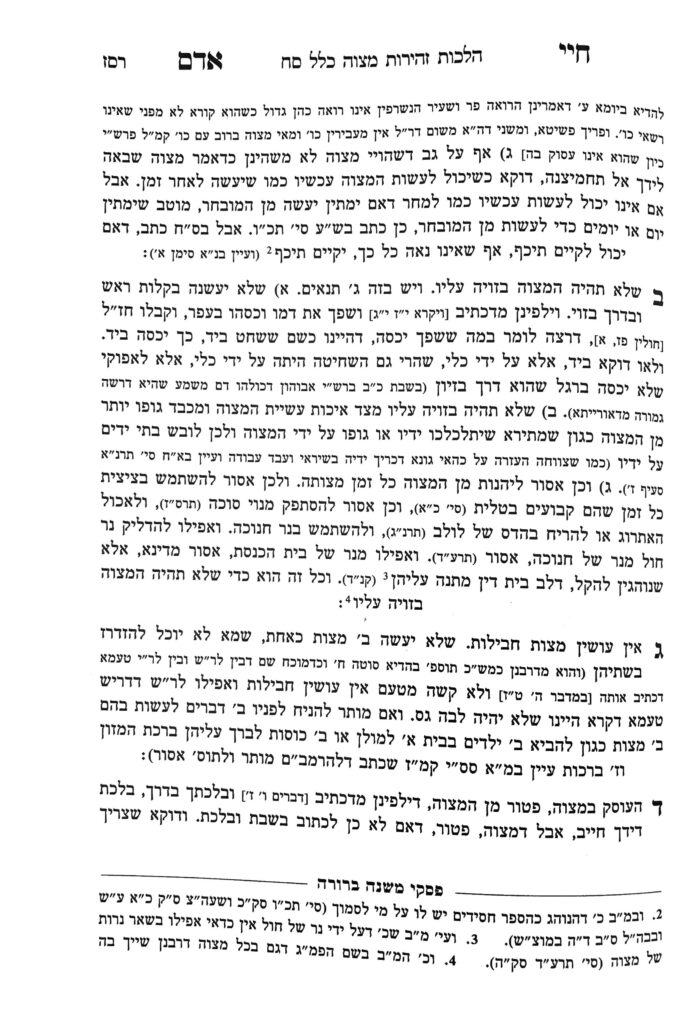We are continuing siman 2, where the Chayei Adam discusses the concept of not doing mitzvos in a manner of bizayon. We learned the first two applications of this concept, that one should not do a mitzvah in a manner which appears flippant and degrading, and that one should not do a mitzvah in a manner in which the mitzvah appears degrading for the person. Today, we will learn the third application.
The Chayei Adam writes that the third application of not doing mitzvos in a manner of bizayon is that as long as an item is being used for a mitzvah, it is assur to derive non-mitzvah benefit from it. The Chayei Adam gives a number of examples to this application:
- One cannot use tzitzis strings for another purpose while they are connected to a garment. Once they have been removed from the garment, they may be used for other purposes, such as for a bookmark.
- One may not use sukkah decorations during Sukkos
- One may not eat their esrog (assuming they will buy another) or smell their hadassim during Sukkos
- One may not derive benefit from chanukah candles, not even to light another candle from them.
- Theoretically, one cannot use the candles of a shul to light other, non-shul candles. However, the Chayei Adam points out that regarding shul candles, we are lenient due to the concept of lev beis din masneh aleihem. Since it was so common to use shul candles for other purposes, a takanah was made that any time candles are designated for use in the shul, they are not fully designated for the mitzvah, and may be used for non-mitzvah purposes as well. This takanah is binding even if one did not have anything in mind when they designated the candles for shul use. This condition does not always work, and we will discuss its parameters at a different time, be’ezras Hashem. Over here, it would work to allow others to use shul candles for other uses.
The Chayei Adam explains that the purpose of these limitations is to help ensure that mitzvos are not performed in a manner of bizayon. Although these actions do not always appear to others as degrading, however, the idea is that using a mitzvah in a way which equates it to secular purposes is a bizayon to a mitzvah. For example, the same way that one understands that a sefer Torah has kedusha, and cannot be used for secular purposes because it is on a higher plane; all mitzvos are on that higher plane as well. Equating a mitzvah with everyday purposes by using the same object for both is pulling the mitzvah off of its pedestal, and is an element of bizayon.
Similarly, while disgracing a person is one level of aveirah, even equating a gadol batorah to a regular person is a bizayon also, as it lowers him from his exalted status.
Summary
One should not perform a mitzvah in a manner which appears to be a bizayon.
- The first application of this concept is that one should not perform a mitzvah in a flippant or degrading manner.
- The second application of this concept is that one should not do a mitzvah in a manner in which the mitzvah appears degrading for the person
- The third application of this concept is that while an item is being used for a mitzvah, it is assur to derive non-mitzvah benefit from it.



